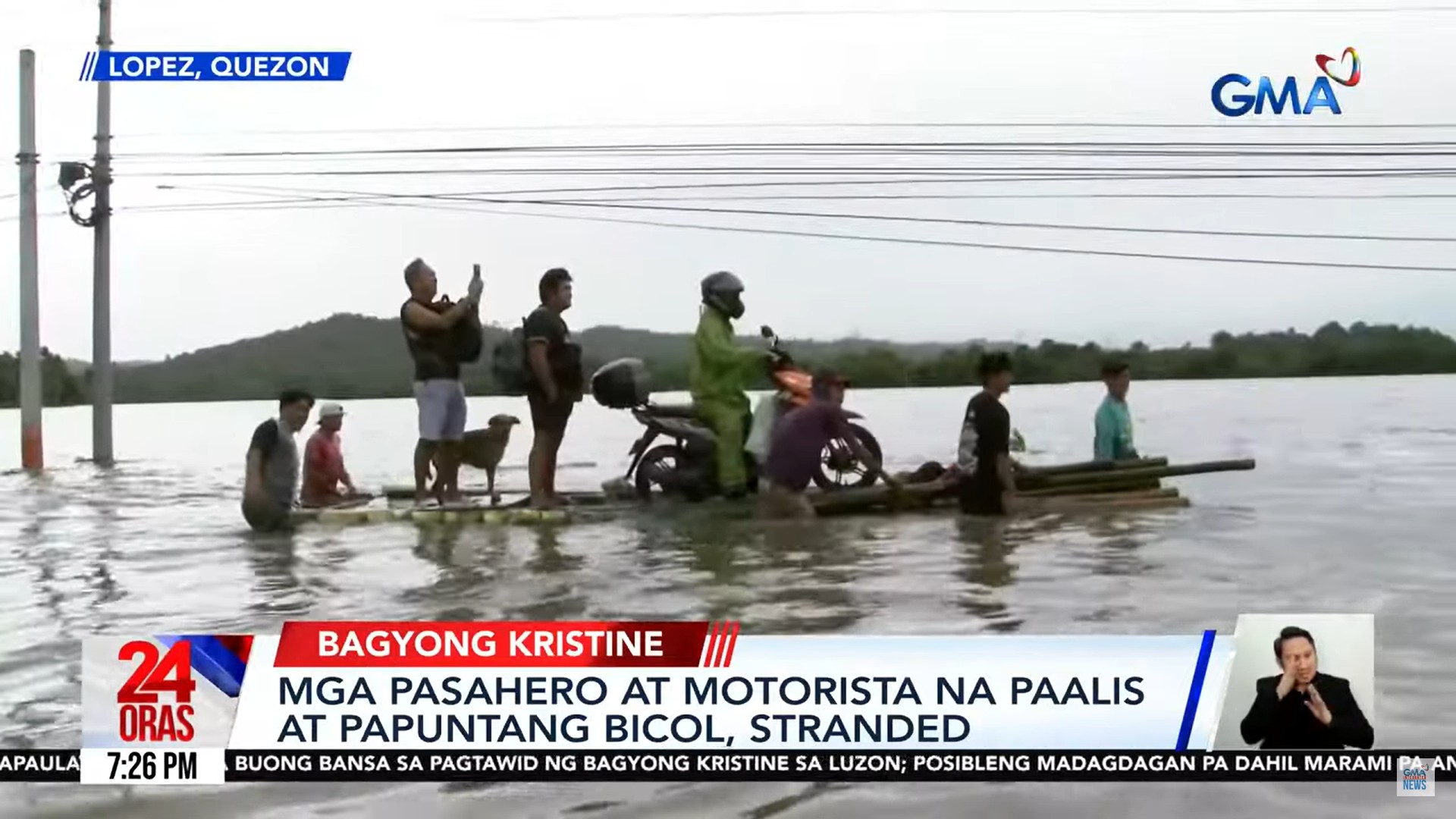Headline: Severe Tropical Storm Kristine Causes Floods on Maharlika Highway
Escalating Floods Disrupt Travel on Maharlika Highway in Quezon
The Maharlika Highway, a vital link connecting Tagalog to the Bicol region, has faced significant disruptions due to severe flooding caused by Tropical Storm Kristine. Heavy rain has left only large vehicles able to pass, stranding light vehicles and commuters alike. Reports indicate that individuals, including families with planned vacations, are feeling the strain as the floodwaters continue to rise, impacting their travel plans and daily activities.
Stranded Travelers and Unforeseen Delays
The situation escalated rapidly on Thursday when commuters narrated their experiences to Jun Veneracion on GMA’s 24 Oras. Many motorists expressed frustration as they found themselves trapped by the deluge. “We will no longer cross because the water is already deep,” one driver lamented. Another added, “We have no choice but to wait for the flood to subside.”
Among those caught in the turmoil are families who had special plans. “We were supposed to go on a trip to honor our father’s death,” a traveler sadly remarked. The unexpected flood left them at their wits’ end, as they calculated their journey would take them into Saturday without an opportunity to attend the memorial. Their financial constraints compounded their worries: “Our budget is already running out because we thought we could proceed with our trip today,” she disclosed.
Local Innovation Amid Chaos
Despite the flooding’s challenges, enterprising locals have found unique solutions. Many have constructed makeshift wooden boats to ferry stranded passengers and motorcyclists across the floodwaters. This ingenuity highlights the resilience of the community in the face of adversity.
In an act of determination, a man was spotted traversing the deep water on foot to deliver a birthday cake. The cake, intended for a celebration, symbolizes the community spirit and the importance of maintaining life’s celebrations, even amid tough conditions.
Government Response and Safety Measures
The local government of Lopez has initiated emergency measures, temporarily banning all non-essential vehicles from crossing the affected stretch of the Maharlika Highway. Only vehicles involved in emergency services are permitted, ensuring that their resources can focus on public safety and timely emergency response.
As of 8 p.m. on Thursday, Quezon province is under Tropical Cyclone Signal No. 1, with officials advising residents to remain alert. State weather bureau PAGASA continues to monitor the situation closely and provides real-time updates to keep the public informed.
The Broader Implications of Severe Weather
The occurrence of Severe Tropical Storm Kristine and its cascading effects on travel demonstrates the rising impacts of climate change on everyday life. Experts are increasingly vocal about how severe weather can disrupt transportation infrastructure, ultimately affecting economic activities and public safety.
According to Dr. Laura Bell, climate researcher at the University of the Philippines, “The frequency and intensity of tropical storms are markedly increasing, which calls for urgent action from local governments and communities to invest in robust disaster preparedness and infrastructure resilience.” This sentiment echoes among many technology leaders focusing on innovations that enhance weather prediction and real-time data sharing to improve response efforts during adverse conditions.
Community Engagement is Key
As continuing weather challenges impact the way communities interact and travel, local initiatives and government responsiveness will be critical in shaping public sentiment and safety measures. Residents are encouraged to share their experiences and tips for coping with extreme weather on social media, fostering a culture of support and innovation.
By understanding these challenges together, communities can devise solutions that not only address immediate needs but also enhance resilience against future calamities.
What are your thoughts on how local communities can better prepare for severe weather events? Share your comments below or join the conversation on our social media platforms.
For further reading on technology’s role in disaster preparedness, visit Wired and for climate impacts on travel, see TechCrunch.
